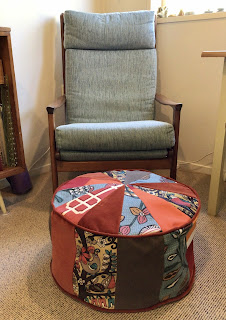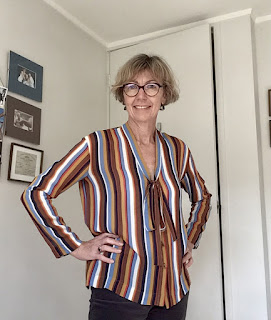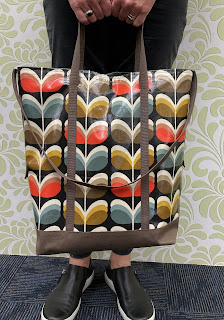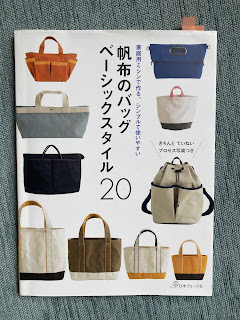At the start of this year I wanted to make 12 things. The idea was mainly clothes to wear, but also a bag. I wanted to reduce the fabric in my cupboard. Although I don't have a huge stash, I was somewhat overwhelmed by having material I had previously bought with big plans, only to have it sit in a box in my cupboard for, quite literally, years in some cases.
We have lived in our house for 5 years, and during this time there has been a gradual paring down of, well, 'stuff'. Part of living intentionally, wanting things to enhance my life, not engulf it. It has not been a dramatic Swedish Death Cleanse but a reflective process applied when energy permits.
So here was my plan.
1 The Kingfisher top - still to get there. I have some silk but need ribbing. Then found I had a lot of ribbing but not quite the right solour. Then I found I had some scraps which might work, still might too - check in with me next year!
2 Ditto above for the Kobe top - so glad I bought both these patterns though because I am set (LOL)!!
3 Gingham checked shirt is as photographed. I am delighted with this. It is from a Japanese magazine purchased in Tokyo, Nippon Sewing district. On a rather hot 2019 day I lugged my purchases around; These included this red checked gingham and the 3 magazines I had bought and a lot of other fabric too. I have sewn up 4 pieces of fabric from that trip. I have worn this shirt a bit, so that feels good. I am a little wary of Japanese pattern sizing, but this did work. I may make it again. I think next time possibly a more drape in the fabric choice would be good.
(row 2)
5 New Look 8536. This coat I have half cut out - then hit a snag, well I made a mistake. So I bundled it up and will look at it again one day. Given the fabric was some which I have had for at least 5 years, it will keep.
6 Sewing Revival Snug Pants, I made in a striped cotton knit. These are my 2nd pair. I often live all day in my merino pair. Always need to remember to allow for a full calf adjustment, even in knit! I miss pockets in this pattern.
7 Capsule Trousers. I have a 3/4 made pair of trousers from the Capsule Wardrobe book. I am not sure I was thinking at all when I embarked on these, and they do need finishing. If I listen to Heather Lou's (Closet Core Patterns) pep talk I will get to the end and not focus on the fitting issues. My plan is to do an online course with Heather Lou for the next fitted pants make. So these did not make it over the line this year but they are not completely abandoned.
8 Friday Pattern Company V Neck Tee Shirt. I made two V-neck tee shirts, with this free pattern. In two different sizes. I was planning these would be for general in the garden and possibly tramping. The merino knit I used was way too fine. One shirt I managed a lovely finish on neckline, the other not so much. Chalk it up to learning, and for me buying fabric online does not produce the best outcomes.
(bottom row)
9 My Heron Shirt I am delighted with.
So there's the wrap! Time to look forward to the journey into 2022 and the makes it may contain . . .
Claire





















































